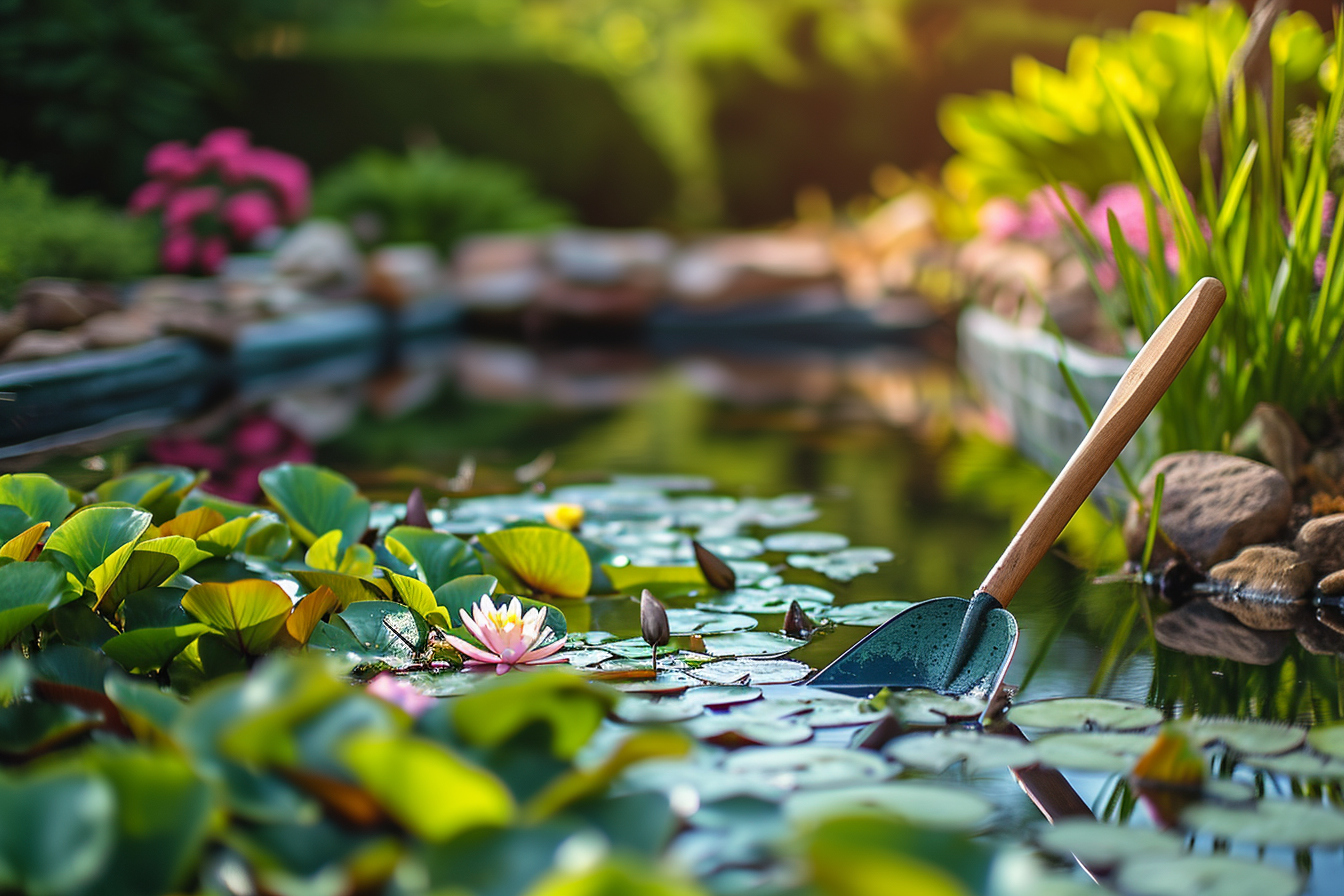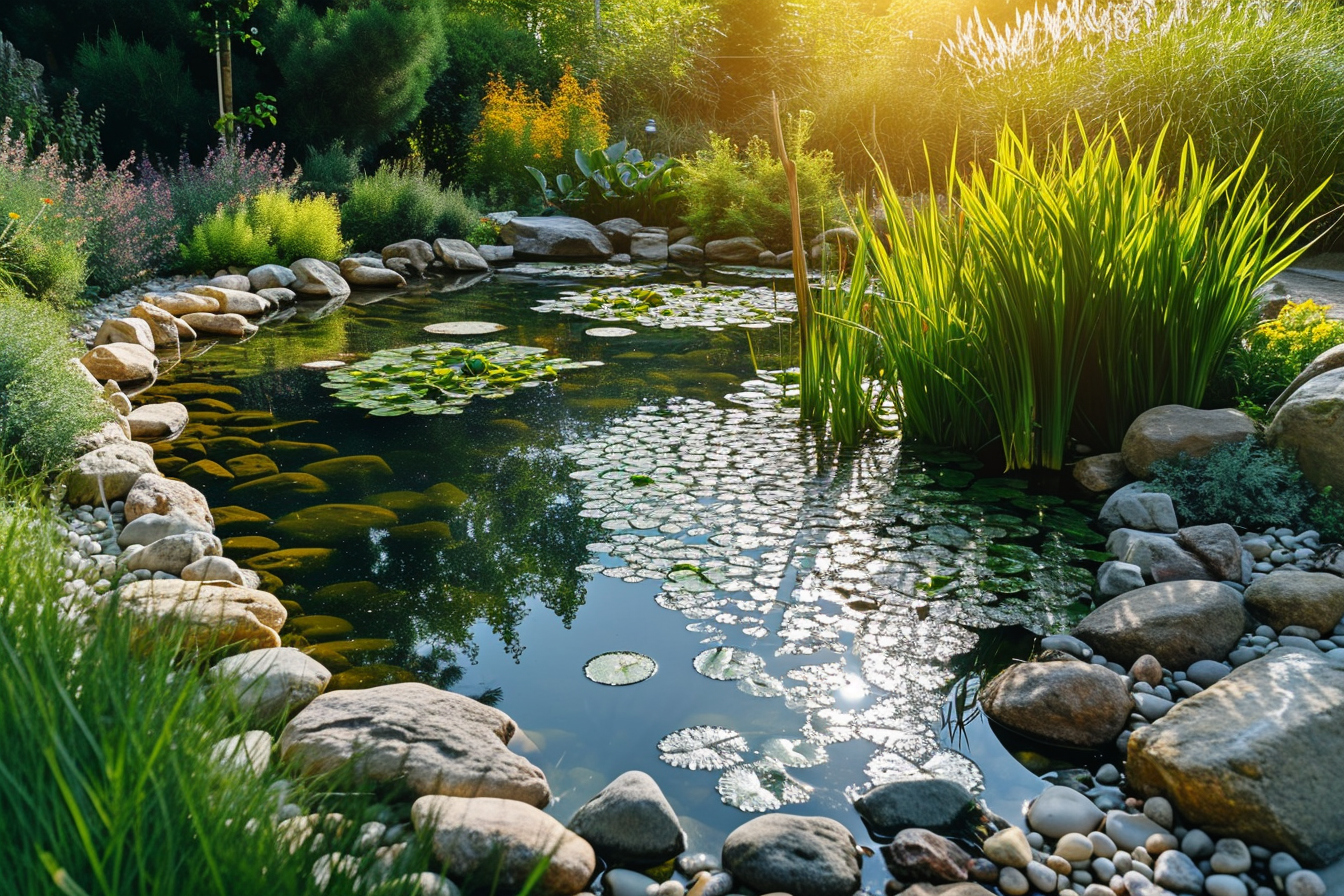
Water gardening is not just a hobby; it’s an art form—a delicate balance of nature and design that creates a serene and vibrant water-based garden ecosystem. Those who opt to delve into the intricacies of water gardening often find themselves captivated by the tranquility and beauty that a well-designed aquatic plant garden can offer. Designing an aquatic garden is an exciting endeavor that can transform any landscape, but it requires thoughtful planning and a solid understanding of the specific needs and interactions of water-dwelling plants and wildlife.
Understanding the basics of water gardening
Before embarking on your water gardening journey, it’s essential to grasp the foundational elements that will make or break your aquatic oasis. Water gardens can range from small container water features to expansive ponds featuring a variety of plants, fish, and possibly other aquatic creatures. The scale of your water garden will largely determine the complexity of its maintenance and the variety of life it can support.
Key Elements of Water Gardening:
- Water Quality: Maintain oxygen levels, pH balance, and clear water for plant health.
- Plant Selection: Choose plants that are suited to your climate and the specific conditions of your water garden.
- Design Principles: Consider the visual impact, with a focus on aesthetics from various viewpoints.
Selecting the perfect location
The real estate mantra of "location, location, location" applies to water gardens as much as it does to homes. A successful water garden thrives in a location that receives ample sunlight; most aquatic plants need a good six hours of direct sunlight to flourish. Also, placing the garden too near trees can lead to excessive leaf litter in the water, potentially disrupting the delicate ecosystem. Equally important is access to electricity for pumps and filters, and proximity to a water source for convenient top-ups and water changes.
Crafting a balanced design
In the planning stage, detail the balance between the hard and soft landscaping components of your garden. Hard landscaping elements like rocks, edging, and pathways establish the foundation and geometric layout of your garden. Conversely, soft landscaping refers to the placement of soil, plants, and often the wildlife that will animate the space. Balance these aspects to create a visually appealing and ecologically sound garden that integrates seamlessly with its surroundings.
The Golden Ratio is an often-observed principle in design, emphasizing a natural harmony that can be appealing to the eye. You might consider this while planning the shapes and proportions of your pond or water feature, aiming for a look that feels both organic and planned.
Choosing aquatic plants strategically
Aquatic plants are not just decorative; they play a pivotal role in the health and clarity of the water. They absorb nutrients from the water that would otherwise feed algae, contribute to oxygenation, and provide shade and shelter for aquatic wildlife.
Categories of Aquatic Plants to Consider:
- Submerged plants (oxygenators): Like Hornwort or Anacharis, they release oxygen into the water, which is vital for fish and beneficial bacteria.
- Floating plants: Without the need for soil anchoring, species like Water Lilies and Lotus provide shade and reduce algae growth.
- Marginal plants: Situated on the water’s edge, Irises and Cattails act as natural filters, extracting excess nutrients from the water.
- Emergent plants: Towering above the water, plants like Papyrus or Pickerel provide structural beauty and habitat for wildlife.
The technical aspects of water gardening
Pumps and Circulation Systems:
A pump is the heart of the water garden, circulating water and ensuring that the oxygen levels are adequate for the health of the entire system. Different pumps serve various purposes from powering fountains to driving filtration systems.
Filtration Solutions:
Filtration systems are critical to maintaining clear and healthy water. Mechanical filters remove debris, while biological filters use bacteria to convert harmful toxins like ammonia into safer substances.
Incorporating wildlife into your garden
When stocked responsibly, fish and other aquatic creatures can be beneficial to the aquatic garden’s ecosystem. Fish feed on insect larvae and algae, helping to keep both at bay. However, overcrowding can lead to poor water quality and stressed fish, so it’s crucial to strike a balance.
Diverse species such as frogs, snails, and insects may also find refuge in your water garden. Their presence is often a solid indicator of a healthy environment—and a testament to the gardener’s skills in creating a sustainable habitat.
Seasonal maintenance tips
Every water garden will have different requirements depending on the climate, plant, and animal life involved. Regardless of these differences, there are some common maintenance activities that should be conducted with the changing seasons to keep your garden in top shape.
Strong emphasis should be placed on seasonal preparation:
- Spring: Re-establish the garden’s biological balance, carefully prune dead plant material, and begin to reintroduce fish if they were removed for the winter.
- Summer: Monitor water levels closely, as evaporation can lower them significantly. Stay vigilant about water quality as higher temperatures can promote algae growth.
- Fall: Begin preparing the garden for the colder months by removing fallen leaves and trimming back plants.
- Winter: Appropriate winter care can vary widely. In milder climates, your garden may require only minimal attention. However, in areas with a severe freeze, additional steps will need to be taken to ensure the survival of plants and fish.
Aesthetic considerations and artistic flair
Beauty remains a primary objective in water gardening. Harmonize the colors, textures, and growth patterns of your plants to create a visually stunning display. Consider how the garden will look during different parts of the day under varying lighting conditions. Nighttime lighting can transform the mood and highlight certain features of the garden that are not as prominent during the day. Reflections on the water surface add another dimension to the visual experience, so arranging your planting to capitalize on this effect can be tremendously impactful.
Mastering the intricate world of water gardening demands patience, research, and a keen eye for design. With these carefully curated tips, you stand poised on the brink of creating a truly breathtaking aquatic plant garden. Remember that each garden is unique and may require different approaches to achieve equilibrium.
Embrace the iterative process of learning and growing that comes with water gardening. Observe your water garden closely, make adjustments as needed and soon, you’ll witness the transformation of your outdoor space into a lush, flourishing aquatic paradise.
As your knowledge expands, so too will the complexity and beauty of your water garden. Keep exploring new plants, innovative design techniques, and the latest in aquatic ecosystem management to ensure your water garden thrives for years to come.







Leave a Reply